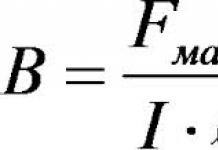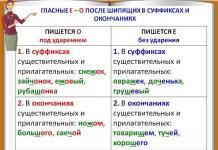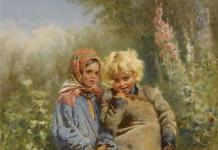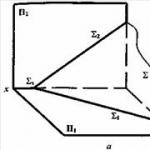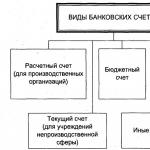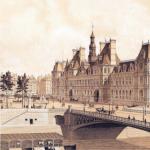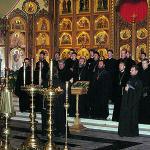- You have read N. A. Nekrasov’s poem “Peasant Children.” Why do you think it is named like that? What is it about? How did the hero meet with the peasant children and what did he immediately like about them? Does the narrator himself belong to the peasants? Can you tell by his behavior and speech? Provide evidence to support your answer. What epithets and comparisons does the poet use when talking about the appearance of peasant children? Why did the children’s eyes attract the author’s special attention and what did he see in them?
- What did the children “marvel” at and what “sentence” did they pronounce? Why did they decide that the stranger was “not a master”?
- What does the poet say about mushroom raids together with children? What feats did they perform and from whom did they expect glory? Does the poet write about this seriously or ironically? Who delighted them with stories on vacation?
- What is the “smart side of work” and how did parents involve their children in work?
- Read by role the scene of the meeting of the main character “in the cold winter season” with Vlas.
- Many pictures pass before the reader's mind's eye in this poem. Which ones do you particularly remember and why?
- What mood are these paintings permeated with (sad, cheerful)? Do you think you answered correctly the first question asked of you, what is this poem about? How would you answer it now? What did the author want to say about peasant children?
- What pictures of childhood and the surrounding world does the poet paint and what does he wish for children?
Enriching your speech
- How do you understand the words and phrases: doggerel, tenderness touched the soul, dear rogues, holy kindness, mushroom raids, planes, blue ribbon, centuries-old inheritance, bread of labor!
- Write out from the poem the words incorrectly pronounced by peasant children, for example: vdna, don’t freeze, they’ll steal... How to pronounce them, put the correct emphasis.
- In the works you have read, there are many words that are undeservedly rarely used in modern Russian, for example, sculpture, velichava, dear, inheritance, command. Explain the meaning of these words.
Learning to read expressively
Prepare an expressive reading of the poem, highlighting sad and happy episodes in its content.
Literature and visual arts
Look at D. Shmarinov’s illustrations for the poem “Peasant Children.” Do they help you better understand the poet's thoughts and feelings?
Prepare an oral story about the children shown in the illustration.
Answers to school textbooks
2. What did the children “marvel” at and what “sentence” did they pronounce? Why did they decide that the stranger was “not a master”?
The children talk about the hero, examine him, try to determine his social affiliation: is he a gentleman, in other words, a landowner, a nobleman, or a commoner. They pay attention to the beard (kids believe that “bars don’t have beards - they have mustaches”), to expensive watches, to a purebred dog, to a double-barreled gun, and they are surprised at everything.
What happened to me - they marveled at everything and pronounced my verdict:
- What kind of hunting is such a goose doing?
I would lie on the stove!
And it’s clear that it’s not the master: how he rode from the swamp,
So next to Gavrila...
Kids believe that people hunt to get game and eat it. They see that a person who has fallen asleep in a barn is rich enough to hunt for food, and can rest quietly, in the children’s opinion, lying on the stove. They saw that the guest was returning from a hunt next to Gavrila, in other words, with one of the farmers of their village, and the “bars,” in their opinion, would never talk amicably and freely with the peasants. That’s why the guest is “not a master.”
3.What does the poet tell about mushroom raids together with children? What feats did they perform and from whom did they expect glory? Does the poet write about this seriously or ironically? Who delighted them with stories on vacation?
It must be said that Nekrasov, unlike many nobles of those times, never considered farmers to be people of low origin, communicated freely with them and even made friends, respecting their natural resourcefulness, intelligence and human soul. As a child, he lived on the Volga, on his father’s estate, and played a lot with peasant children. Next, the author recalls how, as a child, he walked with the children to pick mushrooms.
The creator writes that during the “mushroom raids” he tried to notice the “mushroom place”, but after that he could not find it. Peasant children simply later found such places based on signs they understood. The children could play a joke on the simpleton: they joked, calling the snake a ringlet. On another trip to the forest, the children “killed enough” snakes and placed them on the railings of the bridge along which a large road passed through the village. They thought, perhaps under the influence of Russian folk tales, where heroes fight with the Serpent Gorynych, that people passing along it would be taken aback by the exploits of the children living here, and would think: “Who caught so many snakes?”
Ancient spreading elms grew in the village, and on a hot summer day many people passing along the road, mostly artisans and workers, stopped here to rest in the cold. The children surrounded them, and the workers told attentive listeners about what they had seen in life: “about Kyiv, about the Turk, about wonderful animals.” The road was a specific school of life for the children.
4.What is the “smart side of work” and how did parents involve their children in work?
By “the smart side of labor,” the creator assumes satisfaction from excellent and friendly physical work, from cultivating the land, which brings a secure harvest. When a child sees that the work in which he participated brings visible results, that the person who completed this work is honored and respected, he also wants to participate in work, and such work is not a burden, not a punishment, but satisfaction.
6. Many pictures pass before the reader’s mind’s eye in this poem. Which ones do you particularly remember and why?
Many pictures pass before the mental eye of the reader who gets acquainted with this poem.
1) The hunter is resting in the barn on the hay, and the children peep at him through the crack and talk together, discussing the hunter.
2) The creator remembers when he was little, remembers the peasant children’s trips to pick mushrooms and their joke with the snake.
3) Peasant children on the highway listen to the stories of passers-by and examine the tools with curiosity.
4) After picking mushrooms, the children swim in the meadow river.
5) Returning to the village, the kids play games, some help their parents.
6) The kids go into the forest to pick berries, there they find fun for themselves: at one moment they are afraid of a little hare that jumps out, they catch an old wood grouse.
7) Pictures of rural labor that the child watches.
8) Meeting of the creator with six-year-old Vlas, who helps his dad carry firewood from the forest.
9) The creator returns to the beginning of the poem and tells how the hunter’s acquaintance with the children continued: the creator ordered the trained dog to show some jokes, and the kids rejoiced at the sudden performance. Suddenly a thunderstorm began, and the kids ran away to the village.
7.What mood are these paintings permeated with (sad, cheerful)? Do you think you answered correctly the first question asked of you, what is this poem about? How would you answer it now? What did the author want to say about peasant children?
The pictures drawn by the creator are imbued with a good feeling of admiring and immediately being sad: the creator knows very well the life of peasant children, he understands that satisfaction and freedom have a downside. The creator realizes that children are the future of the people.
8.What pictures of childhood and the surrounding world does the poet paint and what does he wish for children?
See question 6.
The poet appeals to children to adore their native land:
The poet appeals to children to love their native land:
Play, children! Grow in freedom!
That's why you were given a wonderful childhood,
To love this meager field forever,
So that it always seems sweet to you.
Keep your centuries-old inheritance,
Love your labor bread -
And let the charm of childhood poetry
Leads you into the depths of your native land!..
Page 187
1. How do you understand the words and phrases: doggerel, tenderness touched the soul, dear rogues, holy kindness, mushroom raids, planes, blue ribbon, centuries-old inheritance, bread of labor!
Meaning of words and phrases:
verses - poems
tenderness touched the soul - the person experienced a feeling of tenderness, bright quiet joy
dear rogues - the author calls children this because they are cunning, they cheat, but their trickery is naive, there is no malicious intent in it
holy kindness - holy kindness, because it is selfless, deeply sincere
mushroom forays - fun trips to the forest to pick mushrooms
plane - carpentry tool
a blue ribbon - the author compares the river to a blue ribbon between green fields
centuries-old legacy - the author means the best traditions of the Russian people, love for work, for the homeland
labor bread is bread that is not obtained for nothing, but thanks to a lot of work.
2. Write out from the poem the words incorrectly pronounced by peasant children, for example: won, don’t wash, they’ll steal... How to pronounce them, put the correct emphasis.
Look, look, look, it’s simple.
3. In the works you have read, there are many words that are unfairly rarely used in the modern Russian language, for example, sculpture, majestic, dear, inheritance, command. Explain the meaning of these words.
Statue - a sculptural image; statue.
Velichava - imbued with solemn beauty, grandeur;
indicating inner dignity; majestic.
Rodimenky - your own, dear.
Destiny - share, fate, fate.
Nikolai Alekseevich Nekrasov is a new trend in the history of Russian literature. He was the first to introduce the theme of the common people and filled the rhymes with colloquial expressions. The life of common people appeared, and a new style was born. Nikolai Alekseevich became a pioneer in the field of combining lyricism and satire. He dared to change its very content. “Peasant Children” by Nekrasov was written in 1861 in Greshnevo. The barn in which the narrator slept was most likely located in Shod, under the house of Gabriel Zakharov (the children recognize him in the story). At the time of writing, the poet wore a beard, which was rare for nobles, so the children questioned his origins.
Rich image of peasant children
The future writer was born into a simple, poor, but respected family. As a child, he often played with his peers. The guys did not perceive him as a superior and a gentleman. Nekrasov never gave up on a simple life. He was interested in exploring new worlds. Therefore, he was probably one of the first to introduce the image of a common man into high poetry. It was Nekrasov who noticed the beauty in village images. Later, other writers followed his example.
A movement of followers was formed who wrote like Nekrasov. “Peasant Children” (which can be analyzed based on the historical period in which the poem was written) stands out noticeably from the poet’s entire work. There is more grief in other works. And these children are full of happiness, although the author does not have great hopes for their bright future. Little ones don’t have time to be sick and think about unnecessary things. Their life is full of the colorful nature in which they were lucky enough to live. They are hardworking and simply wise. Every day is an adventure. At the same time, children absorb science bit by bit from their elders. They are interested in legends and stories; they even do not shy away from the work of the carpenter mentioned in the poem.
Despite all the problems, they are happy in their corner of paradise. The author says that there is nothing to pity or hate such children, they should be envied, because the children of rich people do not have such color and freedom.
Introduction to the poem through the plot
Nekrasov’s poem “Peasant Children” begins with a description of the previous few days. The narrator was hunting and, tired, wandered into the barn, where he fell asleep. He was awakened by the sun breaking through the cracks. He heard the voices of birds and recognized pigeons and rooks. I recognized the crow by the shadow. Eyes of different colors looked at him through the crack, in which there was peace, affection and kindness. He realized that these were the views of children.
The poet is sure that only children can have such eyes. They quietly commented among themselves on what they saw. One looked at the beard and long legs of the narrator, the other at the big dog. When the man, probably Nekrasov himself, opened his eyes, the children rushed away like sparrows. As soon as the poet lowered his eyelids, they appeared again. They further concluded that he was not a gentleman, because he was not lying on the stove and was coming from the swamp.
Author's thoughts
Next, Nekrasov breaks away from the storyline and indulges in reflection. He confesses his love for children and says that even those who perceive them as “low-class people” still once envied them. There is more poetry in the life of the poor, says Nekrasov. Peasant children made mushroom forays with him, placed snakes on the bridge railings and waited for the reaction of passers-by.

People were resting under the old elm trees, children surrounded them and listened to stories. This is how they learned the legend about Valil. Having always lived as a rich man, he somehow angered God. And since then he had neither harvest nor honey, only they grew well. Another time a working man laid out his tools and showed interested children how to saw and chop. The exhausted man fell asleep, and the guys started sawing and planing. Then it was impossible to remove the dust for a day. If we talk about the stories that the poem “Peasant Children” describes, Nekrasov seems to convey his own impressions and memories.
Everyday life of peasant children
Next, the writer leads the reader to the river. There is a vibrant life there. Who bathes, who shares stories. Some boy catches leeches “on the lava, where the queen beats the laundry,” another looks after his younger sister. One girl makes a wreath. Another attracts a horse and rides it. Life is full of joy.

Vanyusha’s father called him to work, and the guy gladly helps him in the field with bread. When the harvest is harvested, he is the first to try the new bread. And then he sits astride a cart with straw and feels like a king. The other side of the coin is that children do not have the right to choose their future, and Nekrasov is concerned about this. Peasant children do not study and grow up happily, although they have to work.
The most striking character in the poem
The next part of the poem is often mistakenly considered a separate work.
The narrator “in the cold winter season” sees a cart with brushwood, a horse is led by a little man. He is wearing a big hat and huge boots. It turned out to be a child. The author said hello, to which the boy replied to let him pass. Nekrasov asks what he is doing here, the child replies that he is carrying firewood that his father chops. The boy helps him because there are only two men in their family, his father and him. Therefore, it all looks like theater, but the boy is real.

There is such a Russian spirit in the poem that Nekrasov wrote. “Peasant children” and an analysis of their way of life show the whole situation in Russia at that time. The writer calls for growing up in freedom, because later this will help you love your labor.
Completion of the storyline
Next, the author breaks away from the memories and continues the plot with which he began the poem. The children became bolder, and he shouted to the dog, named Fingal, that thieves were approaching. We need to hide our belongings, Nekrasov told the dog. The peasant children were delighted with Fingal's skills. The dog with a serious face hid all the goods in the hay. She worked especially hard on the game, then lay down at her owner’s feet and growled. Then the children themselves began to give commands to the dog.
The narrator enjoyed the picture. It became dark and a thunderstorm approached. Thunder roared. The rain fell. The spectators fled. Barefoot children rushed to the houses. Nekrasov stayed in the barn and waited out the rain, and then went with Fingal to look for snipes.
The image of nature in the poem
It is impossible not to praise the richness and beauty of Russian nature. Therefore, along with the theme of love for children, Nekrasov’s work “Peasant Children” glorifies the delights of life behind the gray walls of the city.

From the very first lines, the author drowns in the cooing of doves and the chirping of birds. Then he compares the color of the children's eyes with the flowers in the field. The image of the earth haunts the poet in the forest when he is picking mushrooms. From the forest he leads the reader to the river, where children are swimming, which is why the water seems to laugh and howl. Their life is inseparable from nature. Children weave wreaths of pale yellow flowers, their lips are black from the blueberries that set their teeth on edge, they meet a wolf, feed a hedgehog.
The role of bread in the poem is important. Through the eyes of one of the boys, the narrator conveys the holiness of growing grain. He describes the entire process from throwing the seed into the ground to baking the bread at the mill. Nekrasov’s poem “Peasant Children” calls for eternal love of the field, which gives strength and labor bread.
The presence of nature adds melody to the poem.
The hard life of Nekrasov children
The fate of peasant children is tightly tied to labor on the land. The author himself says that they learn labor early. So, Nikolai Alekseevich gives the example of a little boy who matured early. A six-year-old boy works in the forest with his father and does not even think about complaining about his life.

Respect for work is instilled from childhood. Seeing how their parents treat the field with respect, their children imitate them.
Coverage of educational issues
In addition, the problem of education arises in the poem, which Nekrasov raises. Peasant children are deprived of the opportunity to study. They don't know books. And the narrator is worried about their future, because he knows that only God knows whether the child will grow up or die.

But in the face of endless work, children do not lose their thirst for life. They have not forgotten how to enjoy the little things that come their way. Their everyday life is full of bright, warm emotions.
The poem is an ode to ordinary children. After its publication in 1861, the entire rich world learned that peasant children are wonderful. Nekrasov exalted the simplicity of existence. He showed that in all corners of the country there live people who, despite their low social status, are distinguished by humanity, decency and other benefactors, which have already begun to be forgotten in large cities. The product was a sensation. And its relevance remains acute to this day.
Read the poem by N.A. Nekrasov "Peasant Children"
Message 1
Born into a noble family, Nekrasov for some reason writes poems about peasant children.
“Greshnevo was by no means “in an unknown wilderness.” Here Nekrasov, the people's poet, was very lucky. From the very beginning, Nekrasov found himself on such a big road, but for the time being he did not ride, but, so to speak, sat behind him, while Rus' rode and - even more - walked in front of him.
“The Kostroma postal road (meadow),” military statisticians of the General Staff described it in the mid-19th century, “runs from Yaroslavl along the left bank of the Volga River through flat and low-lying areas and near the village of Borok it enters the Kostroma province. In total, from Yaroslavl to the border of the province, this tract is considered to be 45 versts; within the province there is one postal station, Timokhinskaya, 27 versts from Yaroslavl, on which there are 20 horses, and a surface payment of 1.0.5 kopecks in silver. This road is very convenient for the passage of troops and heavy loads.”
So the high road really was widely included in all life, in the very life of these places.
“The village of Greshnevo,” the poet himself recalled, “stands on the (tract) lower Yaroslavl-Kostroma road... the manor’s house overlooks the very road, and everything that walked and drove along it and was known, starting with postal troikas and ending with prisoners, chained in chains, accompanied by guards, was the constant food of our childhood curiosity.” “Everything that walked and rode along it was known” - and these are days, months and whole years.”
Nekrasov saw a lot, absorbed a lot like a sponge, and as a mature poet he embodied everything he saw, captured in his works.
Message 2.
From the memoirs of N.A. Nekrasov’s sister Anna Butkevich.
“...The peasant huts began directly behind our garden. I remember that this neighborhood was a constant disappointment for our mother: a crowd of children who deliberately chose a place for their games on the other side of the garden lattice fence, like a magnet, attracted my brother there - no amount of persecution helped. Subsequently, he made a loophole and, at every opportunity, crawled out to their village, took part in their games, which often ended in a general fight ... "
Message 3.
Of course, the master's son was not allowed to be friends with the children of serfs
Nikolai Skatov in his article about Nekrasov wrote the following:
“...It must be said that Nekrasov the boy grew up and was brought up with the village boys and girls. “My relationship with the sinners was like this:
...Thanks be to God,
I did it again
Dear this road,
This is a spare barn,
Here are the rigs...how sweet
Warm head of steam!
-Stop the horses!
You see: from every gate
The man in the street is walking quickly.
Still familiar people
Whatever the guy, he's a buddy.
I constantly played with the village children, and when we grew up, it was natural that there should be such shortness between us.”
The poet really knew people's life from the inside from early childhood, in the most direct, homely way he knew, through friendship, often the same people at different ages and observing in different positions, and sometimes - later - and intervening. And helping.
And in poetry, for the same reason, he could, like no one else, write about peasant rural childhood.<...>
Nekrasov sympathized with the difficult life of the peasants.
Questions about the content of N.A. Nekrasov’s poem “Peasant Children.”
1. Are these lines familiar to you?
2.This excerpt is taken from the long poem “Peasant Children”.
3. What is the boy's name? How old is he?
4.What does the boy look like?
5. Follow the change in the author’s mood, what feelings does the author experience from meeting children?
6. Where does the poem begin?
7. So, the narrator says that he dozed off in the barn, then woke up and saw that peasant children were watching him.
8. What was the immediate behavior of the children?
9. What did the narrator do? How did he amuse the children?
10. At the beginning of the poem it is not said that the dog’s name is Fingal. The narrator began to command his dog to “throw things out.” The trained dog began to obey the owner’s commands, and the barn immediately turned into a circus arena: (find in text)
11. How did the unexpected performance end? Read it.
12. So, we saw that the beginning and end of the poem tell us about the meeting of the hunter with the peasant children. In what situation is such a story possible? What is the narrator's tone of voice? To whom can it be addressed, who are the listeners of this story?
Repetition and consolidation of what has been learned.
1. How did the hero’s meeting with the peasant children happen and what did he immediately like about them?
2. Does the author himself belong to the peasants?
3. What did the children “marvel” at and what “sentence” did they pronounce? Why did they decide that the stranger was “not a master”?


